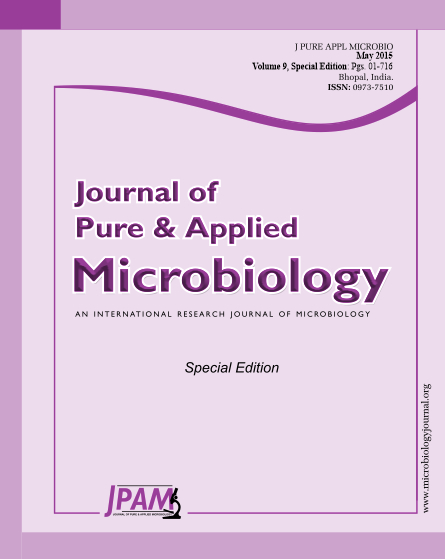The present study was conducted to investigate the etiology and molecular relationship of causal virus associated with pole bean yellow mosaic disease and other related viruses. Yellow mosaic disease on pole bean caused by begomovirus was observed to an extent of 60-70 percent in some cultivars grown in experimental plots at Main research station, Hebbal (Bangalore), Karnataka, India. Symptoms like brilliant yellow or golden yellow colour on leaves which was partially or completely yellow. Cultivars express rugosity, rolling of leaves, and stunting of infected plants. The disease was successfully transmitted by whitefly Bemisia tabaci G. The causal virus was detected using begomovirus specific degenerate primers. The coat protein gene fragment of 1000 bases was amplified from naturally infected and whitefly inoculated plants. Phylogenetic analysis of the CP gene sequence of the virus with other begomoviruses showed cluster next to French bean yellow mosaic virus (FbYMV) GKVK isolate and Lima bean yellow mosaic virus by sharing 99.7% and 98.7% similarity respectively. Hence, the results clearly indicated that the YMV infecting French bean is a close relative of YMV infecting Pole bean. From now, the yellow mosaic virus infecting pole bean can be called as Pole bean yellow mosaic virus (PbYMV).
Begomovirus, Bemisia tabaci G., coat protein, PCR, leaf rolling, rugosity, yellow mosaic
© The Author(s) 2015. Open Access. This article is distributed under the terms of the Creative Commons Attribution 4.0 International License which permits unrestricted use, sharing, distribution, and reproduction in any medium, provided you give appropriate credit to the original author(s) and the source, provide a link to the Creative Commons license, and indicate if changes were made.


